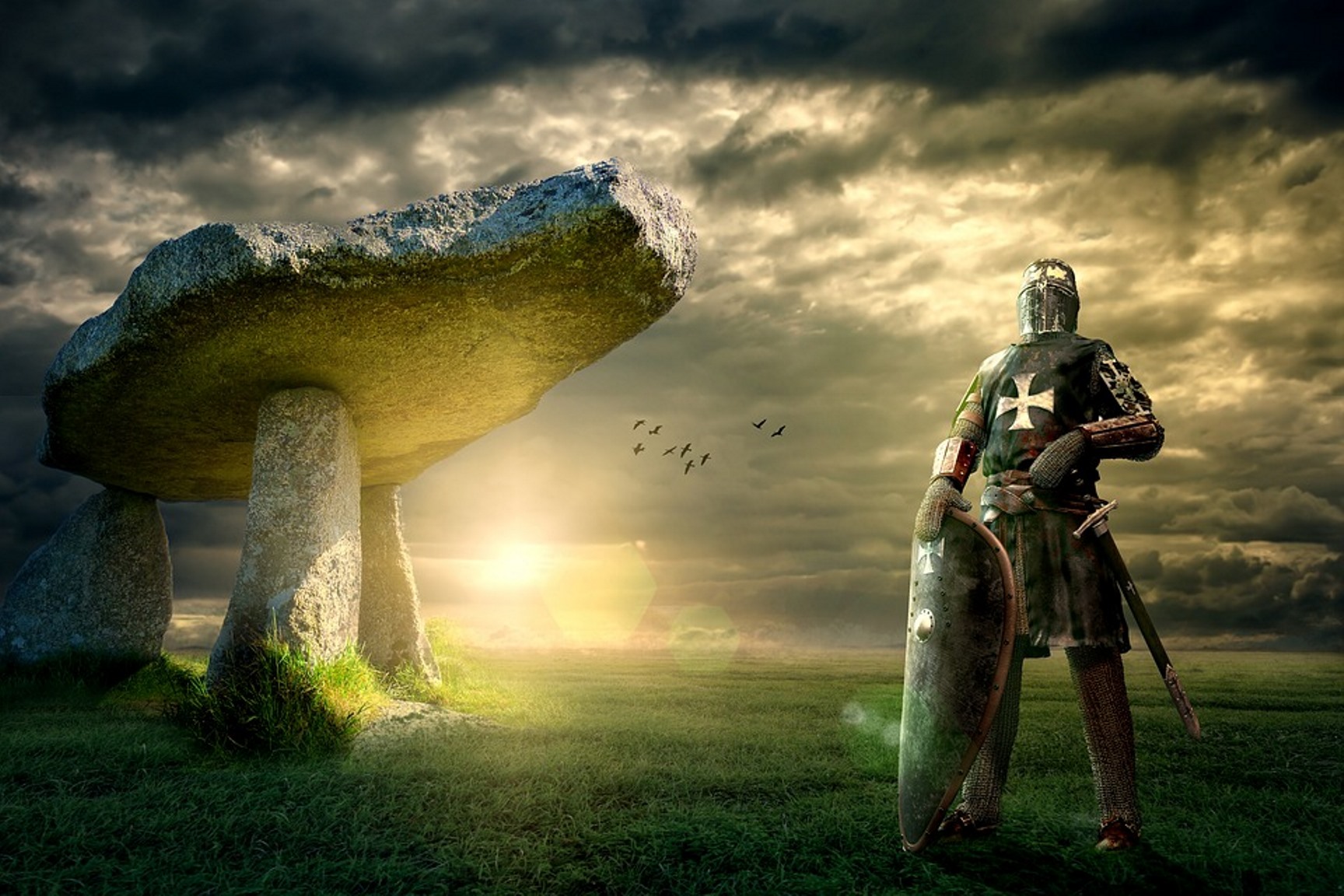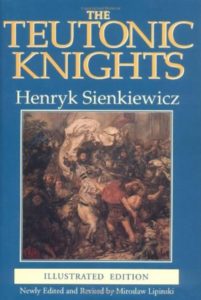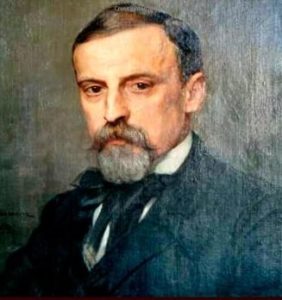Translating deep thinking into common sense
The Great Romantic Novel You Haven’t Read

By Walter Donway
August 16, 2018
SUBSCRIBE TO SAVVY STREET (It's Free)
Ayn Rand, in rating the world’s greatest fiction by the standards of the Objectivist esthetics (set forth in The Romantic Manifesto), named as the single greatest author, Victor Hugo. She named as the greatest single novels, The Scarlet Letter, by Nathaniel Hawthorne, and Quo Vadis, by Henryk Sienkiewicz.
That judgment might rankle Polish readers, who view Sienkiewicz’s Trilogy as his masterpiece and, if I may put it this way, the de facto literary national anthem of their long-embattled, endlessly torn nation. When Ayn Rand named Quo Vadis, however, it had a good English translation, had been made into a Hollywood movie, and had long been one of the world’s most popular novels.
That judgment might rankle Polish readers, who view Sienkiewicz’s Trilogy as his masterpiece and, if I may put it this way, the de facto literary national anthem of their long-embattled, endlessly torn nation. When Ayn Rand named Quo Vadis, however, it had a good English translation, had been made into a Hollywood movie, and had long been one of the world’s most popular novels. (With exquisite drama and religious passion, it depicts the struggles and agony of the earliest Christians in the time of Rome’s monstrous Emperor Nero.)
Only relatively recently did Polish-Americans raise funds for a new, adequate English translation of the 2,000-plus page Trilogy. Unlike Quo Vadis, however, the trilogy is “parochial,” focusing entirely on the epic struggles of the Polish-Lithuanian Commonwealth (the first commonwealth in Europe) against a bloody Cossack uprising, invasion by Sweden, and the attempted surge into Europe of militant Islamic armies. It was the Polish knights, on the border between western and eastern Europe, who for a century repulsed the Islamic invasion and, finally, permanently (until today) ended the attack on Europe by militant Islam at the siege of Vienna.
Readers of Ayn Rand, the foremost contemporary advocate for the literary Romantic movement, have been taught to view Victor Hugo as the triumphant climax and last hurrah of that historic literary movement. Its dates usually are given as roughly 1770 to 1850, but four of Hugo’s novels (the exception is The Hunchback of Notre Dame) come later.
The young Henryk Sienkiewicz (1846-1916) translated Hugo’s novel, Ninety-Three, into Polish and seized the torch of literary Romanticism from Hugo, who died in 1885. It was Sienkiewicz who became the first and only Romanticist to win the Nobel Prize.
The young Henryk Sienkiewicz (1846-1916) translated Hugo’s novel, Ninety-Three, into Polish and seized the torch of literary Romanticism from Hugo, who died in 1885. It was Sienkiewicz who became the first and only Romanticist to win the Nobel Prize in 1905 for his “outstanding merits as an epic writer.”
As Poland was torn apart (by the Russian, Austrian, and German empires), then reunited, then invaded (by the Nazis), then invaded again (by the Red Army), and then subjugated (as a Soviet communist satellite or “captive nation”), the works of Sienkiewicz were there to “uplift the hearts” of his countrymen at a time they were exhausted and enslaved. Here, he said, is proof of Poland’s life and triumph.
I am an ardent fan of Sienkiewicz (and of Polish ancestry on my father’s side), but this summer, for the first time, I read his novel The Knights of the Cross, which was serialized in Poland as it was written and published in 1900. With Poland under domination and censorship of the Russian empire, at that time, Sienkiewicz chose to set his novel in the Middle Ages, when Poland struggled against another tyranny. (Later, The Knights of the Cross was the first novel published, in a new edition, after World War II, as the Nazi occupation yielded to the Red Army occupation.)
 The Teutonic Knights (an alternate English title of the novel), based in Germany, were Christian crusaders who in the Thirteenth Century controlled large parts of the Baltic seacoast. The German (Prussian) religious order proselytized with the sword; their blood-thirsty cruelty to the “pagans” was legendary. Lithuania, at that time, had a Christian ruler but remained pagan throughout its towns and across its vast wilderness. That provided the Teutonic Knights a reason, or pretext, to invade. Their pattern was to slay or enslave all who would not be baptized and to become dominant landholders and rulers.
The Teutonic Knights (an alternate English title of the novel), based in Germany, were Christian crusaders who in the Thirteenth Century controlled large parts of the Baltic seacoast. The German (Prussian) religious order proselytized with the sword; their blood-thirsty cruelty to the “pagans” was legendary. Lithuania, at that time, had a Christian ruler but remained pagan throughout its towns and across its vast wilderness. That provided the Teutonic Knights a reason, or pretext, to invade. Their pattern was to slay or enslave all who would not be baptized and to become dominant landholders and rulers.
Poland, although long Christian, had endless clashes with the powerful Teutonic forces until, at last, in 1410, at the Battle of Grunwald, the United Kingdom of Poland and Lithuania decisively defeated the religious order. (It exists in Germany to this day as a religious charitable organization.)
For a Romanticist, however, a historical setting is only a setting. It is not a theme. Nor is a theme the long, bloody struggle of the Polish knights and the Lithuanian peasant masses against the Teutonic Knights. Polish knights and princes took Lithuania’s part in the battle against “baptism by living blood.” Sienkiewicz made no secret of his scorn and hatred for the Prussian Christian order.
The Knights of the Cross is an epic quest that pits a young Polish knight, Zbyszko—scarcely more than a boy—against the power of the Teutonic Knights at their most fiendish. Zbyszko’s courage and belief in the triumph of the good, of innocence and purity, drives the conflict.
The stakes for which the characters struggle, risk their lives, and (they are convinced) offer their eternal souls are momentous, their all-too-frequent losses heartbreaking. Their values are romantic love, passion, always honor, victory over evil, and heartfelt comradeship.
Sienkiewicz unabashedly exalts plot, with more than a dozen fully drawn characters who bring alive the men and women who made Poland of that day intensely aristocratic, given over to concern with salvation, and almost unimaginably rugged. The stakes for which the characters struggle, risk their lives, and (they are convinced) offer their eternal souls are momentous, their all-too-frequent losses heartbreaking. Their values are romantic love, passion, always honor, victory over evil, and heartfelt comradeship.
If you are imagining the age of knighthood, fair ladies, castles, and tournaments, then Sienkiewicz’s novel will not let you down. If your concept is of courtly, ceremonious, quaintly ritualistic love and honor, then, yes, that is part of the story—but in the sharpest historical focus and revealing details. What Seinkiewicz adds is a graphic description of the legendary ferocity of combat in the Middle Ages. It is matched by the sadistic inhumanity of the militant Prussian monks/knights in the name of God’s will.

Henryk Sienkiewicz
It is difficult, today, to imagine the vastness and dangers of the wilderness in northern Europe in the Middle Ages. Giant bears, aurochs (wild long-horn cattle), wild boars, and ubiquitous packs of wolves threatened travelers on the roads (such as they were) or in the trackless forests. It all becomes the intensely evoked world in which Zbyszko and his allies must seek the more than humanly lovely Danusia (a “maiden” of only 13 when Zbyszko meets and falls in love with her) when she is kidnapped by the Christian Teutonic “brothers.”
Danusia and the other heroine, Jagienka—beautiful, commanding, ready to attack a giant bear with a pitchfork to rescue Zbyszko—have the enchanting capacity of the Romantic heroine for an all-consuming passion and devotion to their man. They are the equal in virtue to the Polish knights. To the very end, we do not know whose love will blossom and whose heart will be broken.
Sienkiewicz’s novel is not tragic, with happiness and success doomed, but, at times, has the depth of bitterness that goes with great love, striving, and hope. The death of Kira in Rand’s We the Living and the crushing of Gail Wynand in The Fountainhead have the same quality because both characters give everything (in their context) to life.
The acts of moral greatness in The Knights of the Cross are Christian, with a stark awareness of the imminence of salvation or damnation. A studied recurrence to such standards as sacrifice, obedience, and the sacredness of oaths causes men and women to act as though watched and judged in each moment. That does not temper the sheer audacity of their deeds. If anything, their capacity for righteousness lends drama to the smallest act as well as the greatest. Daily life is lent a solemnity that gives the lord and the peasant, the king and the slave, stature.
This heightened awareness of the centrality of values keeps the reader aware that we take our soul in our own hands at moments of decisive choice.
This heightened awareness of the centrality of values keeps the reader aware that we take our soul in our own hands at moments of decisive choice. This is equally true in any era, of course, but it is the role of Romanticism to make it, for us, a reality we can experience at the most exalted level. In this capacity, the best novels of Henryk Sienkiewicz, and this is among them, do not disappoint.








